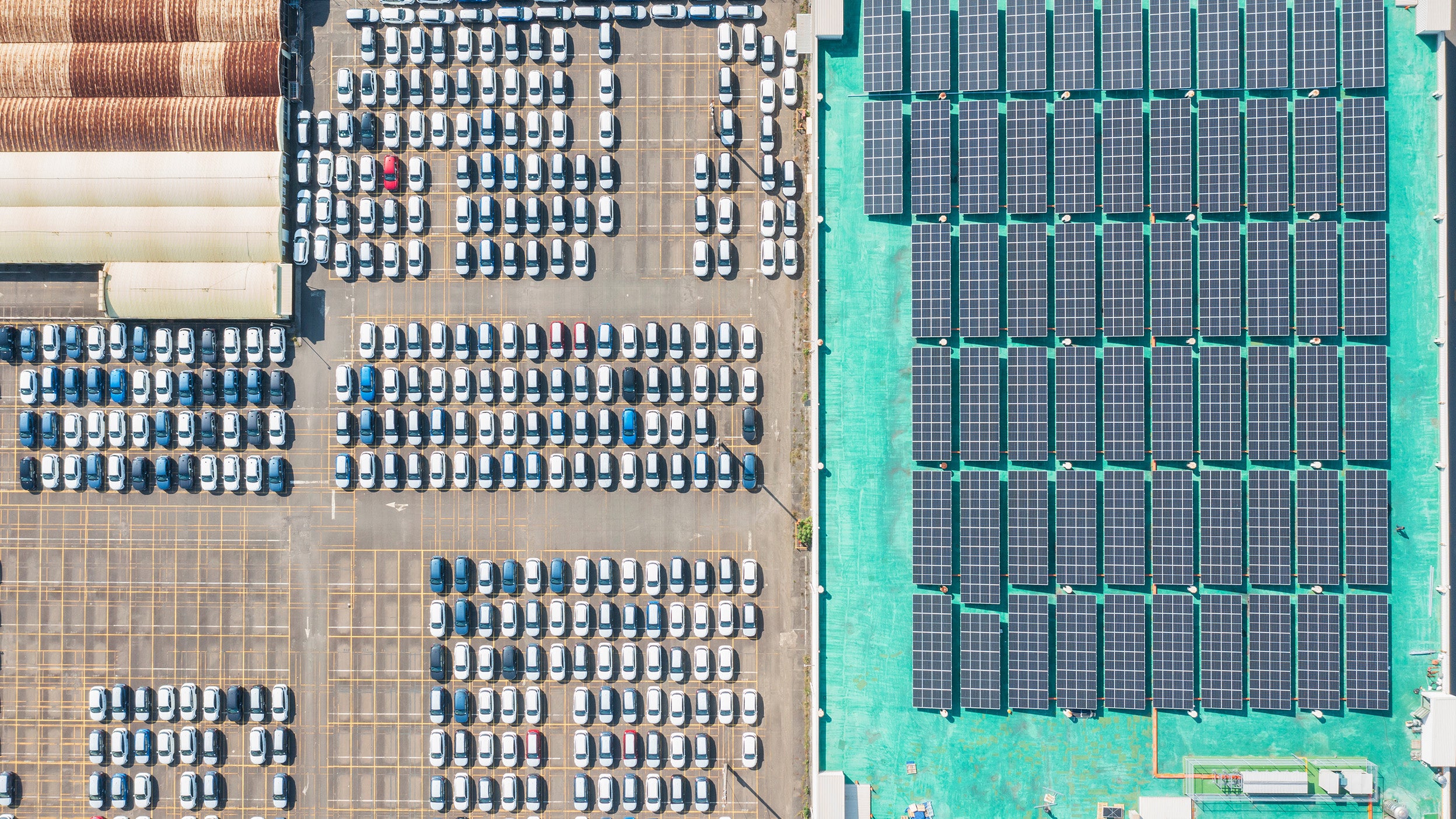
Equities Key takeaways from our equities webinar to share with your clients
Explore key macroeconomic themes and sector trends shaping global equities in 2025, as discussed by experienced fund managers in our recent webinar hosted by Ben Gutteridge.

“What is your outlook for Europe?” might be the polite question but really, what people are asking is “Why bother?”. “The returns are too volatile” and “growth is too lacklustre” to warrant the effort. “Surely just buy US stocks”, especially companies exposed to themes like AI.
Post Trump’s re-election, the US feels even more loved, whilst Europe is very much in the doldrums.
Many investors are assuming (muscle memory) that nothing has improved since the Global Financial Crisis, meaning no real economic growth and ultra-low inflation. This isn’t ridiculous given the impending threat of Trump’s tariffs, the increasing pressures on manufacturers from China, some required consolidation of government finances and domestic politics. European policymakers have been slow to react to economic and political challenges historically, further compounding investor concerns. This can be seen in the very high-risk premium being ascribed to European equities (absolute and vs US), of which the stagnant economy is a key component.
Source: Deutsche Bank as at 5 December 2024. Equity risk premia defined as the difference between the equity earnings yield (of EURO STOXX, S&P 500, FTSE 100 & Nikkei 225) & the respective countries’ 10-year government yields (i.e. 10y Bunds, 10y US Treasuries, 10y Gilts & 10y JGB). 20-year average equity risk premiums: Eurozone 6.3%; USA 3.6%; UK 5.8% & Japan 5.1%.
This pessimism means that current positioning today is the worst it’s been for as long as the Invesco European Equities team can remember. Worse than during the Sovereign Debt Crisis. As was the case then, markets have given up on Europe, pricing out the likelihood of any improvement anytime soon (or ever!). In other words, the environment for European equities is expected to remain dire.
Source: Citigroup as at 22 November 2024. Uses change in open interest – falling/rising – and changes in prices – up/down. 3 month rolling and Z scores.
However, we believe ‘worse’ may be the wrong adjective to use regarding positioning. Perhaps positioning is ‘best’ on a forward-looking basis. The point being that when expectations are at extreme lows, the scope for “positive surprises” is at the maximum. There is a lot that could potentially improve but a trigger is needed. In a June 2020 commentary we argued there was no expectation of inflation and that was both a risk and opportunity. The exciting thing was inflation beneficiaries were superbly cheap at that time. We believe the same looks to be the case for Europe today.
So, what is there on the horizon that could be a trigger? It doesn’t have to be perfect, more that something happens which is only “less bad” than being assumed. What could go right/be less bad/change for the better?
The immediate reaction to Trump being declared the next US President was to sell European stocks generally (and the euro) – even more so, to sell those directly exposed names. There were also some chunky and immediate GDP downgrades – one economist cut 2025 GDP by 50bps. Analysts were quick to point out the earnings risk and European stocks have shown little recovery since. Should we automatically assume that this immediate reaction was the right one? Answer: No, absolutely not. The situation is not as straightforward as it initially seems:
All of this suggests the impact from tariffs could be more muted than expected.
Trump has been very vocal publicly that he wants peace in Ukraine, and quickly. Presumably because he’s unhappy with vast amounts of US money being spent in a region nowhere near home. From a European perspective, we see this as an opportunity.
Assuming Trump cuts US funding to Ukraine, then it will become critical that Europe starts providing more and soon – especially if Europe wants to take an active part in ceasefire negotiations. Thankfully, we are already seeing lots of discussions on this issue at a European level.
“Eurobonds for defence: First tentative green light arrives.” — EU news 19 November. Foreign Ministers from 6 countries (including Germany and UK) discussed security, fair burden sharing and the need for each NATO country to fix their contribution to defence spending to 2% of GDP. This was a good start.
However, and as was also recognised at the above meeting, even more funding is going to be required to ensure a robust, long-standing peace. As a comparison, Russia is already spending >6% of GDP on defence; it is inconceivable that Europe wouldn’t use joint funding if they wanted to match that – issuing Eurobonds to raise financing at the bloc level would be a possible means of achieving this. The spending would be good for the economy with investment in military equipment, weapons, systems, aircrafts, latest defence technologies, construction of facilities and cybersecurity.
All of this assumes the war continues… but what if a ceasefire is reached? If Trump achieves the peace he so champions, Ukraine would require significant reconstruction: As at the end of 2023, the World Bank estimated this would cost $500 billion over 10 years (2.5% GDP), covering housing, infrastructure, energy and transport, meaning a boost to European enterprises/GDP.
How times have changed! Once the European powerhouse, Germany is now known as the “Sick Man of Europe”. German manufacturing has been hit hard from all directions: The lack of cheap oil/gas from Russia (another point that might change if we get peace in Ukraine?!), the softer demand and increased competition from China and of course the higher labour and interest costs. Note: Germany has also underinvested in its infrastructure, another headwind to manufacturing and economic growth.
The traditionally fiscally conservative approach, including the infamous debt brake, means German government support has been inadequate. We believe things are changing. An example of why being the recent announcements from the Bundesbank, perhaps the most fiscally conservative National Central Bank across Europe:
“Bundesbank chief calls for softer debt brake to increase investment… German central bank president Joachim Nagel urges Berlin to relax rules to address defence and infrastructure shortfalls.”
Even Merkel has called for Germany to abandon the zero-deficit constitutional rule. The coalition breakup, in large part due to disagreements over loosening the fiscal reins, is even more significant. The assumed government-in-waiting, the CDU, looks to be more open to at least some re-calibration of the debt brake, on the proviso that it is used to boost investment. Of course, we’ve still got to have the election. But the prevailing economic conditions are bleak and so maintaining the status quo doesn’t look like a viable option.
Source: Destatis, Global Data TS Lombard as at 11 December 2024.
Any change would be positive for Germany itself but could also have repercussions elsewhere: By relaxing their fiscal rules, Germany would be adding to the pressure to the EU to do the same.
Mario Draghi, former chairman of the ECB and Italian prime minister, recently outlined how Europe could become more competitive, leaving behind a cycle of “low industrial dynamism, low innovation, low investment and low productivity growth”. The European Commission President, Ursula von der Leyen, has used this as a blueprint for her priorities for the next 5 years. As well as the need to invest approximately 4.5% of EU GDP per year, Draghi’s plan calls for a reduction of regulatory complexity (bureaucracy), the removal of barriers to innovation and a better/more economical balance between competitiveness & decarbonisation.
The key will be to build consensus amongst the chief policymakers. Von der Leyen will have a crucial role and is already well versed in how the EC operates after having already served 5 years as President; plus, she has re-structured the key commissions, consolidating her power base following the recent EC elections. As a consequence, we are already seeing some encouraging signs of progress: Stéphane Séjourné, European Commissioner for Prosperity and Industrial Strategy, recently provided some ideas to reinvigorate EU’s economy, emphasising the need for a “shock of simplification” in a recent interview in Les Echoes - for example the need for a reduction in the number of European telecom operators (from around 140 currently to 20 or 30 powerful players). For too long, consumers have had the upper hand, effectively disincentivising corporates from investing, and tonally it feels like this imbalance may be on the cusp of change.
China has been a significant drag on both European exporters and European companies based there. This is not just for the obvious sectors like Autos and Luxury, but others like Pulp & Paper, Mining, Semiconductors and Chemicals. We’re now seeing the Chinese government respond. On 3 August 2024 the first raft of measures was announced. After an initial surge in domestic share prices, enthusiasm quickly waned. Whilst these actions were welcomed, they were not deemed sufficient to resolve some of the deep-seated structural issues. The proposal as outlined by the Politburo announcement on 9 December is a much more significant policy shift; ASR nicely summarised the key points: “First, fiscal and monetary policy are set to shift from incremental support to full-on stimulus mode. Second, the politburo said the top policy priority for next year should be to “vigorously boost consumption, improve investment efficiency, and expand domestic demand in all directions””.
Following through on these pledges positions China well to reinvigorate demand and end disinflation. Additional measures cannot be ruled out.
Trump winning the presidency has only added to the already gloomy view of the European economy. Consensus for 2025 is more of the same – sluggish growth of around 1% or less. This broadly assumes manufacturing remains in the doldrums – currently PMI is 45.2, and some muted growth in services.
Contrary to perceptions, not everything in the economy has been bad this year. Take, for example, the improvement in the supply/demand of loans – we are surprised the improvement here, both at the consumer and the corporate level, hasn’t had more attention. As for the manufacturing inventory cycle, it’s as if we’ll never see an improvement in demand. Yes, the de-stocking has taken longer than we thought due to the unusual nature of COVID, but this doesn’t mean the re-stock will never happen. Could consumers be spending a bit more than generally perceived, too? Retail Sales are recovering, something that is not discussed much. And as consumers spend, so companies become more confident and start to invest… and so the cycle restarts again.
Source: Deutsche Bank Research, Bloomberg as at 11 December 2024 (latest available data)
Post Trump, European valuations took a hit in anticipation of a further loss in economic momentum and expected cuts to forecasted earnings. In our view, such depressed valuations on such low earnings expectations suggest that the market is not expecting any positive change at all.
We’ve outlined a non-exclusive list of various top-down developments which could be sources of upside; potential triggers to get European equities going again. If events are less bad than feared or even (brace yourself…) positive, then the appetite to invest in Europe could change with dramatic effect.
If there was more certainty around these top-down events, then the opportunity for equity investors would have been missed. The market discounts the future and we need to pre-emptively position the portfolios to take advantage. We do this by investing in businesses that we believe have the opportunity to improve – quality transition – and have security in terms of the end market exposures, balance sheets and cash flows. We need to ensure we own independently resilient businesses that have leverage to any improvement in appetite for European assets and to European GDP.
The opportunity to make strong investment returns is typically when the market is strongly tilted in one particular direction. Recent examples might be the period between the Euro Crisis and Draghi’s “whatever it takes” speech, and that between the COVID lockdowns and the discovery of a vaccine, or when inflation beneficiaries were being completely overlooked because the markets were not prepared to price in any future inflation… we believe this period now, when Europe is widely dismissed by investors, is the next for the list.
Our portfolios have typically performed strongly after these periods. Today our funds are exposed to sectors and companies which can benefit from a less bad/better macro and less fear towards the asset class in general. This means chemicals, paper and metals, many of which aren’t owned widely. In fact, some of these names are heavily shorted. 2024 was painful for our funds, as we were too exposed to the cycle and not enough to thematics. We believe performance will broaden out in 2025 and feel positive regarding our fund range’s potential. Remember: It’s often darkest before the dawn.

Explore key macroeconomic themes and sector trends shaping global equities in 2025, as discussed by experienced fund managers in our recent webinar hosted by Ben Gutteridge.

Find out what regional stock markets look cheap or expensive and learn from our experts about investing opportunities and risks around the world.

UK Equity Fund Managers James Goldstone and Ciaran Mallon, hosted by Georgina Millar, explore the importance of income, strategies for capturing it, balancing short- and long-term income goals, and when their approach works best.